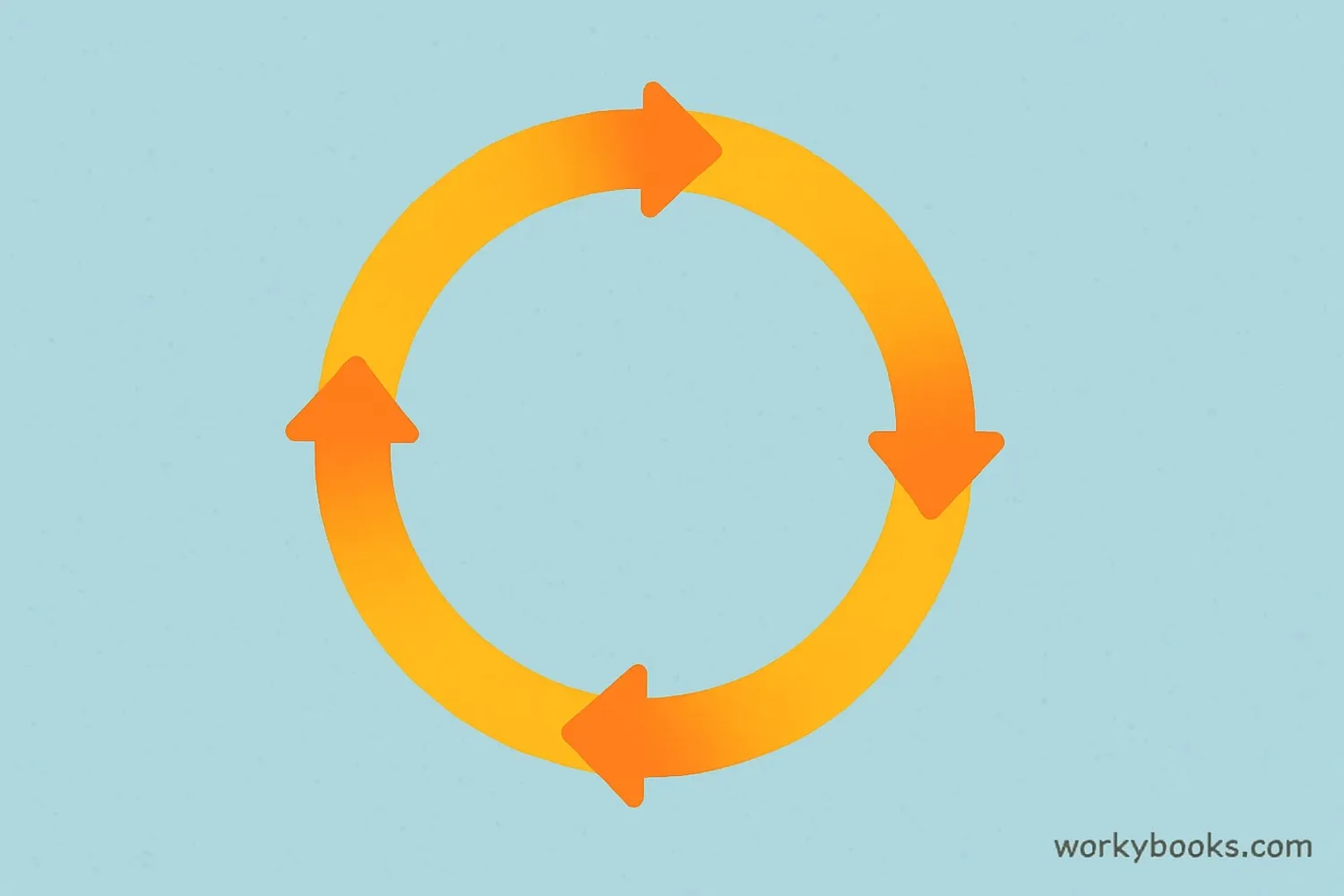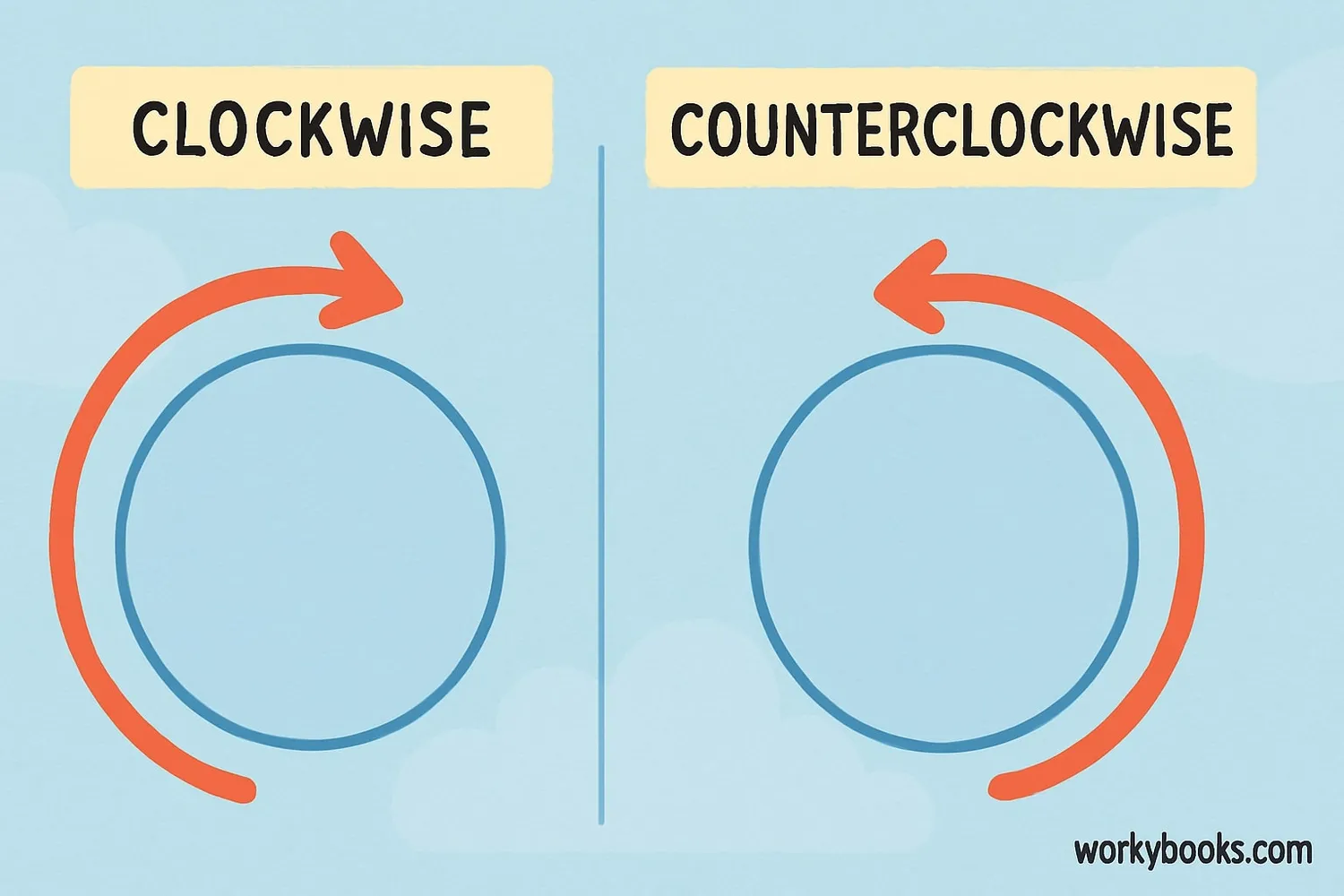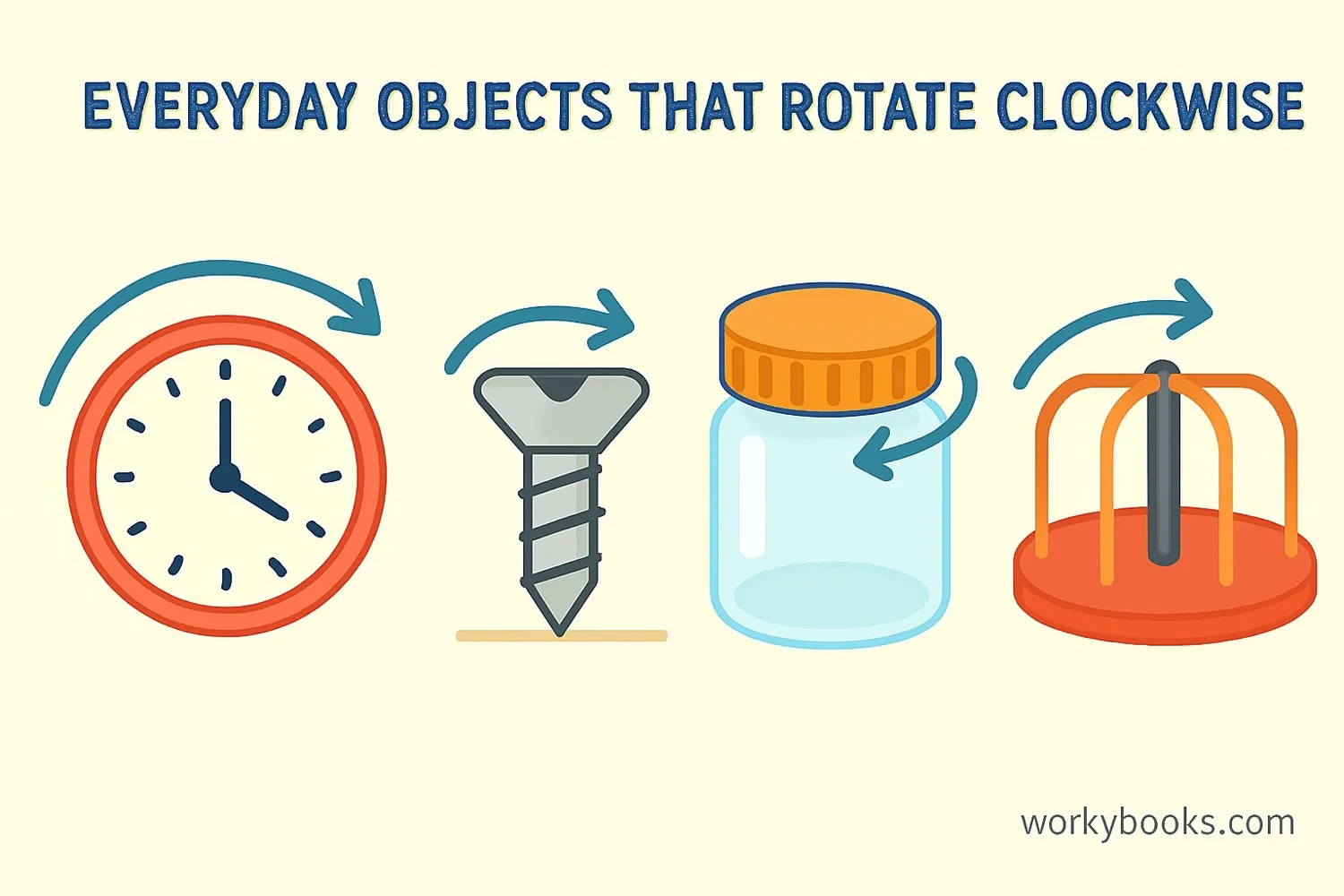Clockwise - Definition, Examples, Quiz, FAQ, Trivia
Learn about clockwise and counterclockwise rotation with visual examples and practice activities
What is Clockwise?

Clockwise means moving in the same direction as the hands of a clock. If you look at a clock, the hands move from the top to the right, then down to the left, and back to the top. This circular movement is called clockwise rotation.
The term "clockwise" comes from clocks because clocks have been telling time with this circular motion for hundreds of years. When something rotates clockwise, it turns to the right.
Imagine turning the lid of a jar to close it - that's usually a clockwise motion. Or when you turn a doorknob to the right to open a door, that's also clockwise.
Key Concept
Clockwise means turning in the same direction as a clock's hands: from top to right, to bottom, to left, and back to top.
Clockwise and Counterclockwise

Rotation can happen in two main directions:
Clockwise: Turning in the same direction as a clock's hands (to the right).
Counterclockwise: Turning in the opposite direction to a clock's hands (to the left). This is also called anticlockwise in some countries.
The direction matters in many everyday situations:
- Screws and bolts tighten when turned clockwise and loosen when turned counterclockwise
- Jar lids usually tighten clockwise and open counterclockwise
- Ceiling fans have settings for both directions for different seasons
- Basketball players spin clockwise or counterclockwise when doing layups
Remember
To remember clockwise: "Righty tighty, lefty loosey" - turning right (clockwise) tightens screws, turning left (counterclockwise) loosens them.
Real-World Examples

Clockwise rotation is all around us. Here are some common examples:
1. Clocks: All analog clocks have hands that move clockwise.
2. Screws and bolts: They tighten when turned clockwise.
3. Jar lids: Most jars close when turned clockwise and open counterclockwise.
4. Water drains: In the Northern Hemisphere, water often drains clockwise due to the Coriolis effect.
5. Merry-go-rounds: Many playground merry-go-rounds turn clockwise when pushed.
6. Steering wheels: When you turn a steering wheel to the right, you're rotating it clockwise.
7. Volume knobs: On most devices, turning clockwise increases the volume.
Science Connection
The Earth rotates counterclockwise when viewed from above the North Pole. This is why the sun appears to rise in the east and set in the west.
Rotation Direction Quiz
Test your knowledge about clockwise and counterclockwise rotation with this 5-question quiz.
Frequently Asked Questions
Here are answers to common questions about clockwise rotation:
Rotation Trivia
Discover interesting facts about rotation directions:
Ancient Sundials
The clockwise direction comes from ancient sundials. In the Northern Hemisphere, the shadow on a sundial moves clockwise as the day progresses.
Hemisphere Differences
In the Southern Hemisphere, water actually drains counterclockwise due to the Coriolis effect, which is the opposite of what happens in the Northern Hemisphere.
Sports Rotation
Most athletes naturally rotate counterclockwise when running track or doing tricks. This might be because most people are right-handed and find counterclockwise turns more comfortable.
Animal Rotation
Studies show that dogs tend to spin clockwise when excited, while cats don't show a consistent direction preference when turning.


